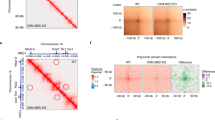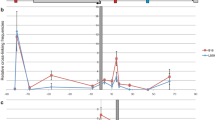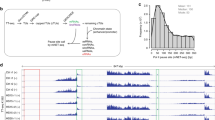Abstract
Complementary DNA encoding the human CYR61 protein was isolated from human embryonic tissues and mapped to chromosome 1p22-p31. We show that CYR61 encodes a 381 amino acid protein rich in cysteine and proline residues that is strongly conserved with the mouse homologue. Sequence analysis reveals the presence of several distinct protein domains which confer a mosaic structure to this protein and makes human CYR61 a member of a recently described growth regulator family that includes several proto-oncogene products. From our results we hypothesize that this new immediate early gene may play a role in cell commitment during embryogenesis and more generally in the control of cell proliferation.
This is a preview of subscription content, access via your institution
Access options
Subscribe to this journal
Receive 50 print issues and online access
$259.00 per year
only $5.18 per issue
Buy this article
- Purchase on Springer Link
- Instant access to full article PDF
Prices may be subject to local taxes which are calculated during checkout
Similar content being viewed by others
Author information
Authors and Affiliations
Rights and permissions
About this article
Cite this article
Jay, P., Bergé-Lefranc, J., Marsollier, C. et al. The human growth factor-inducible immediate early gene, CYR61, maps to chromosome 1p. Oncogene 14, 1753–1757 (1997). https://doi.org/10.1038/sj.onc.1200986
Received:
Revised:
Accepted:
Issue Date:
DOI: https://doi.org/10.1038/sj.onc.1200986
Keywords
This article is cited by
-
Association between CCN1 gene polymorphism and acute coronary syndrome in Chinese Han and Uygur populations
Hereditas (2021)
-
Transplantation of human endometrial perivascular cells with elevated CYR61 expression induces angiogenesis and promotes repair of a full-thickness uterine injury in rat
Stem Cell Research & Therapy (2019)
-
Eyeing the Cyr61/CTGF/NOV (CCN) group of genes in development and diseases: highlights of their structural likenesses and functional dissimilarities
Human Genomics (2015)
-
Effects of CCN1 and Macrophage Content on Glioma Virotherapy: A Mathematical Model
Bulletin of Mathematical Biology (2015)
-
A functional polymorphism in the CYR61 (IGFBP10) gene is associated with prostate cancer risk
Prostate Cancer and Prostatic Diseases (2013)



